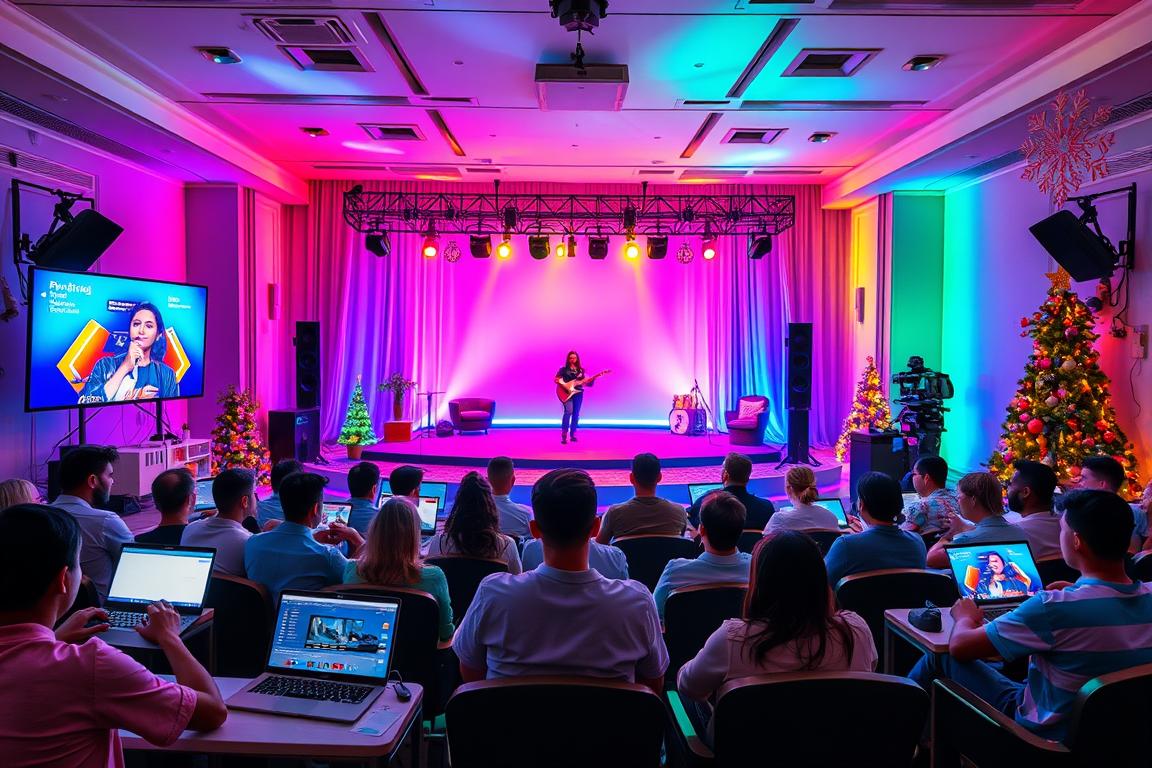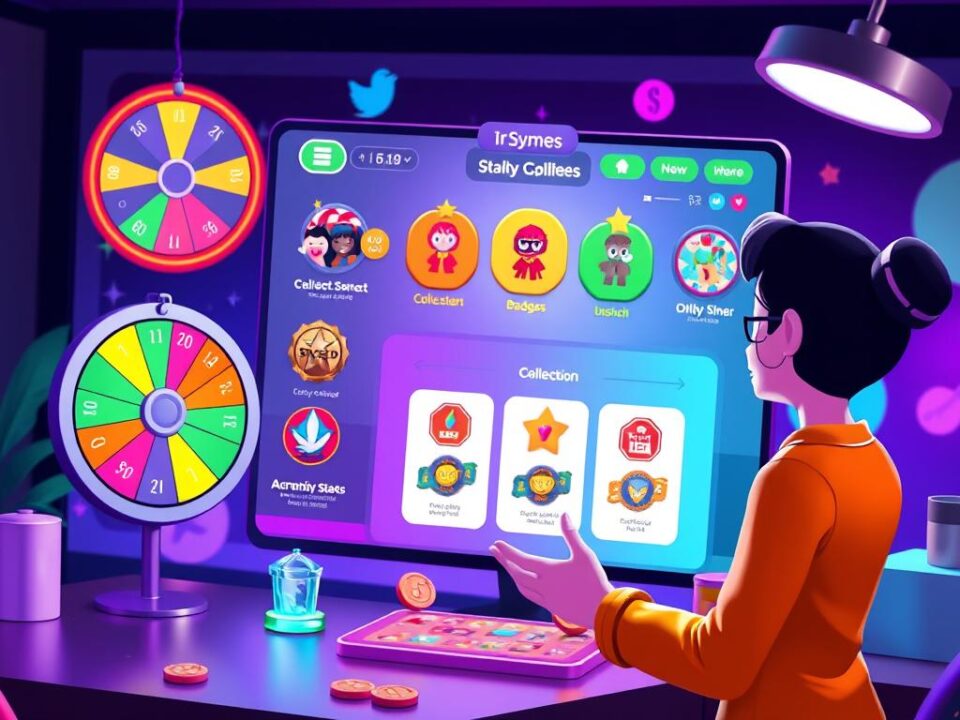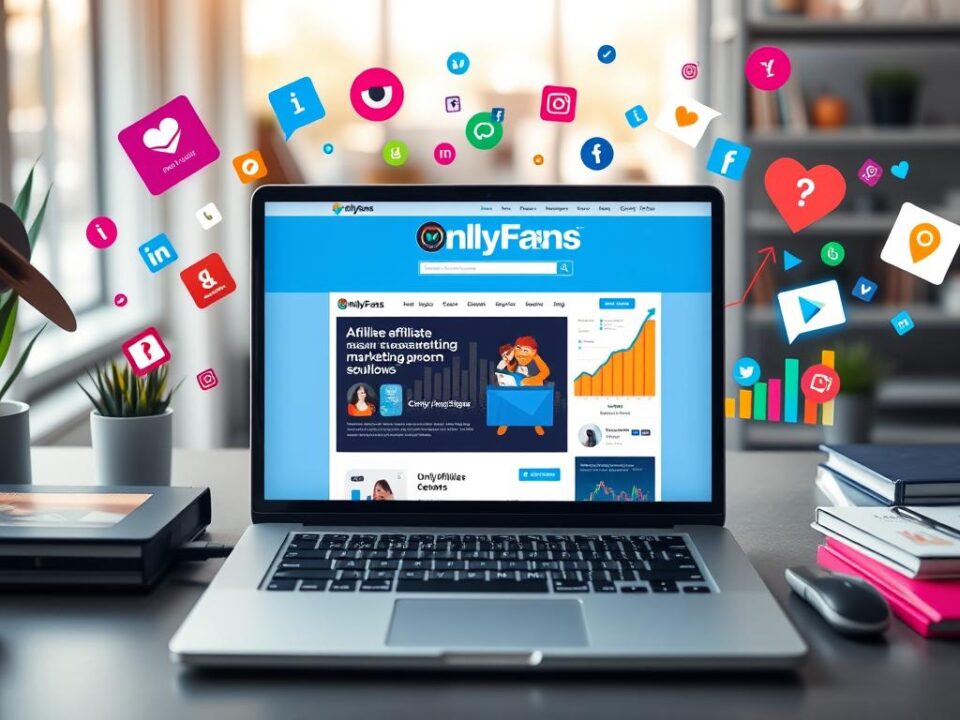Hosting virtual events is a great way for OnlyFans creators to connect with their audience. With over 170 million users, it’s key to stand out. Virtual events let creators meet their fans in new ways, all while saving money.
More and more, people are choosing virtual events. Marketers see this trend, with 40% planning for virtual events and 35% for hybrid ones. This means creators can reach fans worldwide, growing their audience. Let’s dive into how to make the most of virtual events on OnlyFans. Get ready to take your OnlyFans to the next level!
Understanding the Importance of Virtual Events
Virtual events have become very popular in our digital world. They help OnlyFans creators reach their audience easily, without being limited by location. These events are key for creators to engage with more people and show off their talents.
Why Virtual Events Matter Today
Virtual events have seen a big rise, especially after the pandemic. Before COVID-19, only 18.9% of events were virtual. But after, this number jumped to 59.5% among event planners. Now, 94.6% of people want to hold virtual or hybrid events.
Virtual events are great because they’re flexible and open to everyone. They let people join from anywhere, not just where the event is held.
The Benefits for OnlyFans Creators
For OnlyFans creators, virtual events offer many advantages. They can save money, which means more people can join. Virtual events can be up to 70% cheaper than in-person ones.
They also make it easier for people to attend from different places and times. Creators can see how well their events do and improve them. This helps them grow their online presence.
Types of Virtual Events to Consider
Virtual events have become very popular. They offer many ways to connect with people. Here are some great options for OnlyFans creators to try.
Live Streaming Q&As
Live streaming events let creators talk to fans in real time. Fans can ask questions and get answers right away. This makes fans feel closer to the creators and builds a strong community.
Interactive Workshops
Interactive workshops are great for sharing knowledge. They let people learn and participate at the same time. Creators can make these events memorable by adding discussions and activities.
Themed Parties and Celebrations
Themed parties make online events fun and relaxed. Creators can celebrate special occasions with their fans. A well-planned themed event can make fans feel like they’re part of something special.
Setting Goals for Your Virtual Event
Setting goals for virtual events is key to making a big impact. Goals guide your event strategy, making sure everything works together. First, you need to know who your audience is.
Define Your Target Audience
Knowing who will come to your event lets you create content they’ll love. You might want to attract new fans or connect more with current ones. Think about their age, interests, and background. These details shape your event.
Determine Your Objectives
Having clear goals helps you succeed. You might aim to get more subscribers, boost interactions, or raise brand awareness. By setting these goals, you can plan the best ways to reach them.
Use specific KPIs to see if you’re hitting your marks. Look at things like how many people attend, how active they are, and what they say about the event. This helps you know if you’re doing well.
Platforms for Hosting Virtual Events
As online engagement grows, picking the right platforms for virtual events is key. Many software options are available, each suited for different events and audiences. Choosing the right platform can greatly improve the event experience.
Popular Software Options
Some top platforms include:
- Zoom – Known for business and casual events, Zoom has a free plan for up to 100 participants with a 40-minute limit.
- Microsoft Teams – It supports up to 10,000 participants on one call and has a free option for 100 participants with 60 minutes of call time.
- Google Meet – A free service for 250 participants, it integrates well with Google Calendar for easy scheduling.
- Join.me – This paid service offers advanced features like call scheduling and 50 GB cloud storage in its Pro plan, supporting up to 250 participants.
- Orbits – Unique, Orbits allows unlimited attendees to explore different rooms and stages for versatile event experiences.
- Whereby – Focused on branding, Whereby enables custom meeting spaces for up to 50 participants, providing a more intimate setting.
Comparing Features and Costs
When looking at different software, comparing event platforms is crucial. Key features include:
- Livestreaming capabilities
- Engagement tools for audience interaction
- Scalability to accommodate larger groups
- Support services and analytics tools
Cost is a big factor in choosing platforms for virtual events. It’s important to find a solution that fits your budget and meets your event goals. Knowing what each platform offers can help you make a better choice, improving audience engagement and satisfaction.
Creating Engaging Content for Your Event
Making your virtual event content engaging is key to success. To keep your audience hooked, use a mix of strategies. This includes eye-catching visuals, compelling stories, and content that speaks to your attendees.
How to Keep Your Audience Interested
Keeping your audience involved is crucial. Here are some ways to do it:
- Interactive polls and Q&A sessions: These strategies get people involved and boost engagement.
- Gamification elements: Adding quizzes and scavenger hunts makes things fun and encourages more people to join in.
- Breakout rooms: These rooms help people network and build a sense of community.
- Well-structured agendas: A varied schedule keeps everyone interested from start to finish.
- Visually appealing materials: Using videos and infographics makes information easier to understand and more engaging.
Utilizing Interactive Elements
Interactive elements make virtual events unforgettable. Here are some ideas:
- Real-time feedback tools: Live annotation during talks gets people involved and engaged.
- Personalized content streams: Letting people choose what they want to see makes the event more enjoyable for everyone.
- Virtual photo booths: Fun, shareable moments like branded filters encourage people to share on social media.
- Social media integration: Sharing your event on big platforms can get more people involved and interested.
- On-demand content: Offering more content after the event keeps the excitement going.
Promoting Your Virtual Event
Getting the word out is key for a successful virtual event. You need a plan that uses social media and email marketing. This way, you can reach more people and create excitement.
Utilizing Social Media Channels
Social media is a big help in promoting your event. Each platform has its own strengths and reaches different people. Here’s how to use them:
- Instagram for eye-catching visuals and teaser content.
- Twitter for real-time updates and audience engagement during the promotion phase.
- Facebook for creating event pages and sharing in-depth details.
- LinkedIn for networking and tapping into professional audiences.
Building anticipation on these platforms can really boost your event’s popularity. Use posts, stories, and live sessions to keep everyone excited.
Email Marketing Strategies
Email marketing is also crucial for reaching your audience. Here are some tips to make it work:
- Send at least three reminder emails before the event; four reminders work even better.
- Make your subject lines catchy to get more opens.
- Try A/B testing on your registration pages to see what works best.
- Send follow-up emails after the event with surveys, invites to future events, and reviews.
By using email marketing well, you can keep in touch with your followers. This helps ensure they know about your events. It also leads to more people attending and being more involved.
Managing Your Event Execution
Managing your event well is key to making virtual events successful. Good technical setup is essential for a smooth event day. Also, keeping attendees engaged makes the event memorable. Here are some tips for both areas.
Technical Preparations to Consider
Before your event, focus on technical setup. Important steps include:
- Testing internet connections to avoid disruptions.
- Ensuring all equipment, including microphones and cameras, functions properly.
- Training team members in their roles to streamline operations during the event.
By preparing well, you can reduce technical problems. This focus on detail helps create a professional atmosphere. It makes attendees happier with their experience.
Engaging with Attendees During the Event
When the event starts, focus on keeping attendees engaged. Try these strategies:
- Encourage active participation through chats and polls.
- Be available to answer questions in real-time, making attendees feel valued.
- Utilize platform features such as breakout rooms for smaller group discussions.
Engaging attendees makes the event better for them. It also encourages them to come back. Interactive elements help build a community, making your event unforgettable.
Following Up Post-Event
It’s key to stay in touch with people after a virtual event. This helps build strong relationships and ensures the event’s success. Use strategies that fit the event’s unique aspects to improve the experience for everyone.
Importance of Post-Event Engagement
Keeping the excitement going after the event is crucial. Saying thank you or sharing event highlights shows you care. It also strengthens the community feeling.
Use social media to share favorite moments or ask for opinions. This keeps the event’s spirit alive.
Collecting Feedback for Improvement
Getting feedback is a big part of the follow-up. Use surveys to check how the event went, like the speakers and how easy it was to use. This helps make future events better.
Feedback shows what worked and what didn’t. It helps improve things for the next time. Use tools that analyze data to understand what people liked. This helps make follow-up messages more personal.
Measuring Your Event’s Success
Figuring out if a virtual event was a hit needs a smart plan. You must look at certain key signs to see how well people engaged and how the event made an impact. Knowing these numbers helps creators make their events better and keep users happy.
Key Performance Indicators to Track
- Number of attendees: A basic number that shows how many were interested.
- Engagement rate: This is the number of active attendees divided by the total, showing how involved people were.
- NPS (Net Promoter Score): It sorts attendees to see how happy they were, showing if they’d recommend it.
- Conversion rate: This is the number of leads compared to attendees, showing if the event worked well.
- Clap count and poll votes: These show how the audience reacted and got involved in the event.
Analyzing Engagement Rates
Checking how well the event connected with the audience is key. Look at live stream views and meeting numbers to see who was engaged. More people showing up means more interest. Scores like CSat (Customer Satisfaction Score) give a clear number on how good the experience was.
By looking at these, you can see what worked and what didn’t. This helps make future events even better.
Best Practices for Future Virtual Events
To make future virtual events a hit, it’s key to learn from past ones. Look at what went right and what could be better. This means doing deep evaluations and using what people say to make things better.
Also, keep up with the latest tech to keep your events exciting and relevant. This way, you’ll keep your audience interested and engaged.
Learning from Past Experiences
Looking back at past events can teach you a lot. You can figure out what people liked, what kept them interested, and what tech issues you faced. This knowledge helps you plan better for the next event.
By always trying to get better, you’ll make your events more enjoyable for everyone. This makes your attendees feel more welcome and involved.
Tips for Continuous Improvement
Always be open to making things better by listening to feedback and changing your ways. Keep your tech up to date and try new things to keep people engaged. Use strategies like getting leads early and making your content personal to connect with your audience.
This approach of always improving ensures your events meet the changing needs of your audience. It makes sure everyone has a great time.







